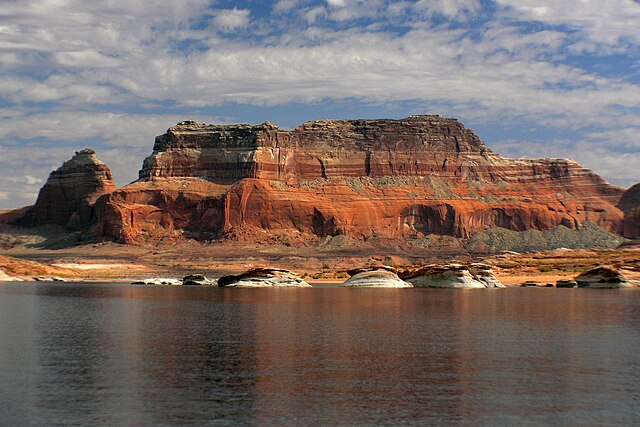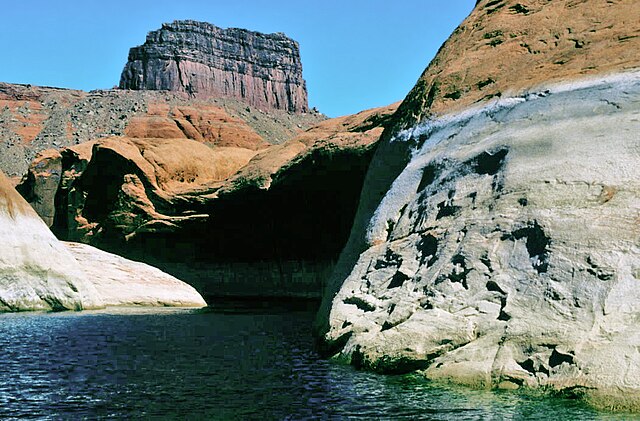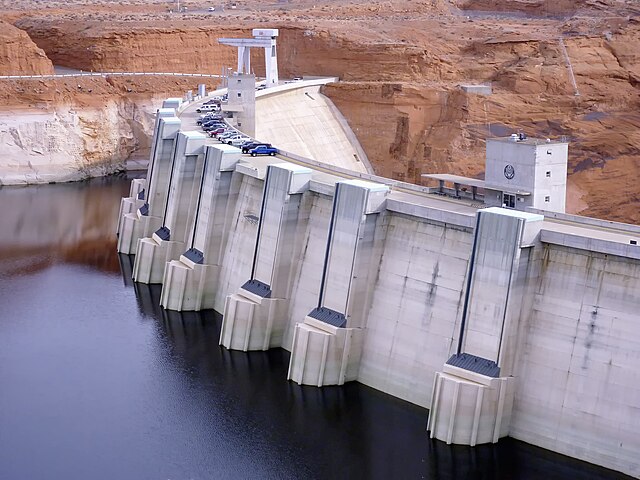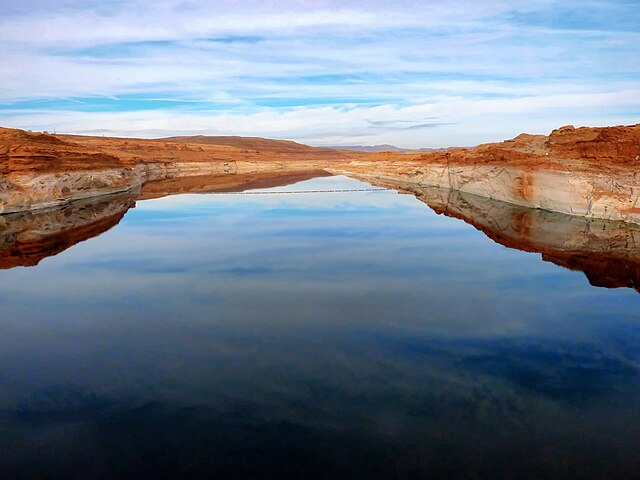Picture this: you’re planning a dreamy getaway to Lake Powell, the shimmering jewel straddling Utah and Arizona. You’re imagining houseboats, fishing rods, and canyon adventures. But then you hear whispers about fluctuating water levels, and suddenly you’re wondering—will there even be enough water for my trip? Don’t worry, I’ve got you covered. Let’s dive into the current state of Lake Powell’s water levels, why they matter, and how they impact your travel plans. Whether you’re a boater, angler, or just a curious traveler, this guide will keep you in the know for 2025.
Why Lake Powell’s Water Levels Are a Big Deal
Lake Powell isn’t just a pretty face—it’s a critical reservoir on the Colorado River, powering homes, irrigating farms, and hosting millions of visitors yearly. Its water levels tell a story of climate, conservation, and human demand. When levels drop, it’s like the lake’s sending us a postcard saying, “Hey, things are getting tricky!” Low water can affect everything from hydropower generation to your ability to launch a boat. So, why should you care? Because understanding these levels helps you plan a trip that’s smooth sailing—literally.
A Quick Look at Lake Powell’s Role
Formed by the Glen Canyon Dam in the 1960s, Lake Powell is the second-largest man-made reservoir in the U.S., right behind Lake Mead. It stores water for the Upper Colorado River Basin states (Colorado, Utah, Wyoming, and New Mexico) and releases it to the Lower Basin (Arizona, Nevada, and California). Plus, it’s a hotspot for recreation, drawing over two million visitors annually. Think of it as a giant bathtub that needs to stay full enough to keep everyone happy.
How Water Levels Impact Visitors
Low water levels can be a buzzkill for travelers. Boat ramps may close, marinas might struggle, and some canyons could become inaccessible. On the flip side, higher levels open up more opportunities for exploration. Knowing the current water level helps you decide whether to rent a houseboat, pack your fishing gear, or stick to hiking the surrounding Glen Canyon National Recreation Area.
Lake Powell’s Water Levels in 2025: The Latest Scoop

As of July 2025, Lake Powell’s water level is hovering around 3,550 feet above sea level, about 150 feet below its full pool of 3,700 feet. That’s roughly 31% of its capacity, according to the Bureau of Reclamation. Sounds low, right? But it’s not all doom and gloom. Let’s break down what’s happening and what it means for your trip.
Recent Trends: A Rollercoaster Ride
Lake Powell’s water levels have been on a wild ride. In 2022, they hit a historic low of 3,522 feet, the lowest since the lake was filled in the 1960s. A wet winter in 2023 brought a much-needed boost, raising levels by nearly 65 feet. 2024 saw stable but modest gains, and 2025 projections suggest levels will stay around 3,550–3,590 feet by summer’s end. It’s like the lake’s trying to catch its breath after years of drought.
What’s Driving These Changes?
The Colorado River Basin has been grappling with a megadrought for over two decades, fueled by climate change and high water demand. Less snowpack in the Rockies means less runoff into the lake. Add in releases to downstream states and evaporation under the desert sun, and it’s no wonder levels have struggled. But conservation efforts, like reduced water use in Arizona and Nevada, are helping. It’s a team effort to keep this bathtub from draining.
How Low Water Levels Affect Your Lake Powell Adventure
Planning a trip to Lake Powell? The water level shapes your experience more than you might think. Let’s explore how it impacts boating, fishing, and other activities, so you can pack smart and set realistic expectations.
Boating is Lake Powell’s bread and butter, but low water levels can throw a wrench in your plans. Some boat ramps, like those at Antelope Point Marina, may not reach the water, forcing you to use alternative launches. Submerged hazards, like rocks or debris, also become trickier to avoid. Pro tip: stick to main channel buoys and check the National Park Service’s “Changing Lake Levels” page for ramp status before you go.
Houseboating Tips for Low Water
Houseboating on Lake Powell is like living in a floating RV with epic views. But at current levels, you’ll need to anchor carefully—rising water can shift shorelines fast. Park your vessel 300–400 feet from the water’s edge to avoid getting stuck in mud. And always double-check marina services; some, like Hall’s Crossing Ferry, only operate above 3,575 feet.
Fishing: What’s Biting in 2025?
Anglers, rejoice! Lake Powell’s fishery remains strong despite lower water levels. Bass, walleye, and striped bass are thriving, and exposed shorelines create new fishing spots. However, you might need to trek farther to launch your boat or adjust your tactics as water clarity changes. Local guides can point you to hot spots, so consider booking a charter for insider tips.
Hiking and Sightseeing: New Opportunities
Low water levels aren’t all bad—they’ve unveiled parts of Glen Canyon that were submerged for decades. Exposed rock formations and canyon walls make for jaw-dropping hikes and photo ops. Areas like Reflection Canyon are more accessible on foot, offering a silver lining for adventurers willing to lace up their boots.
The Environmental Angle: What’s at Stake?
Lake Powell’s water levels aren’t just about your vacation—they’re a window into bigger environmental challenges. The Colorado River Basin is under pressure, and the lake’s fate is tied to climate change, water policy, and ecosystem health. Let’s take a closer look.
Climate Change and the Megadrought
The Southwest’s megadrought, now in its third decade, is no joke. Warmer temperatures mean less snowpack and more evaporation, starving Lake Powell of inflow. Climate models predict this trend could continue, making every wet winter a precious gift. It’s like Mother Nature’s playing a high-stakes game of water roulette.
An Unexpected Ecological Rebirth
Here’s a plot twist: low water levels have sparked an ecological revival in Glen Canyon. Native plants are reclaiming exposed land, creating vibrant ecosystems free of invasive species. Researchers are debating whether to keep parts of the canyon dry to protect these habitats, but that could clash with water storage needs. It’s a tug-of-war between nature and human demands.
Conservation Efforts: Turning the Tide

The good news? People are stepping up to save Lake Powell. From federal policies to local sacrifices, conservation is making a difference. Here’s how the West is fighting to keep the lake alive.
Federal and State Action
The Bureau of Reclamation revised operating guidelines in 2024 to conserve water and stabilize Lake Powell. States like Arizona and Nevada have slashed their Colorado River usage to historic lows, while upstream reservoirs release extra water to boost inflows. These moves are like putting a bandage on a wound—it helps, but it’s not a cure.
What You Can Do as a Traveler
Visiting Lake Powell? You can pitch in, too. Conserve water at campsites, support eco-friendly tour operators, and spread the word about the lake’s challenges. Small actions add up, like droplets filling a bucket. Plus, you’ll feel good knowing you’re helping preserve this stunning destination.
Planning Your 2025 Lake Powell Trip
Ready to hit the water? Here’s how to plan a Lake Powell adventure that works with current water levels. Whether you’re boating, fishing, or soaking in the views, these tips will set you up for success.
Best Time to Visit
Spring and early summer (April–July) are prime time, as snowmelt boosts water levels and temperatures are mild. By late summer, levels may dip, and fall brings cooler weather but fewer services. Check the Bureau of Reclamation’s 24-Month Study for elevation projections to time your trip right.
Booking Marinas and Rentals
Marinas like Wahweap and Bullfrog are your go-to for boat rentals and lodging, but low water can limit availability. Book early, especially for houseboats, and confirm ramp access with the National Park Service. Flexibility is key—think of it as rolling with the lake’s mood swings.
Safety Tips for Low Water
Boating at lower levels requires extra caution. Watch for shallows, carry a depth finder, and avoid crossing shelves like Buoy 94 near Stanton Creek. On land, park vehicles far from the shoreline to dodge rising water during runoff. Safety first, adventure second!
The Future of Lake Powell: Hope on the Horizon?

What’s next for Lake Powell? The 2026 deadline for new Colorado River water-sharing agreements looms large, and negotiations are heating up. Upper and Lower Basin states are at odds, but consensus could stabilize the lake. Meanwhile, conservation and wet winters offer glimmers of hope. It’s like waiting for the next chapter in a gripping novel—will the lake rebound or face new challenges?
Conclusion: Your Lake Powell Adventure Awaits
Lake Powell’s water levels may be a hot topic, but they don’t have to derail your 2025 trip. With a bit of planning, you can enjoy boating, fishing, and canyon exploration while appreciating the lake’s resilience. From conservation efforts to ecological surprises, Lake Powell is a story of adaptation and beauty. So, grab your sunscreen, check the latest water level updates, and dive into an adventure that’s as unforgettable as the lake itself. Ready to make waves? Let’s go!
Frequently Asked Questions
1. What is Lake Powell’s current water level in 2025?
As of July 2025, Lake Powell’s water level is around 3,550 feet above sea level, about 31% of its full capacity of 3,700 feet.
2. Can I still boat on Lake Powell with low water levels?
Yes, but some boat ramps may be closed, and you’ll need to navigate carefully to avoid hazards. Check ramp status on the National Park Service website.
3. How do low water levels affect fishing at Lake Powell?
Fishing remains strong, with bass and walleye thriving. Exposed shorelines create new spots, but you may need to adjust launch points or hire a guide.
4. Are there any benefits to Lake Powell’s low water levels?
Absolutely! Exposed canyon areas offer unique hiking and sightseeing opportunities, and native plants are thriving in newly uncovered land.
5. How can I help conserve water at Lake Powell?
Use water sparingly at campsites, support sustainable tour operators, and raise awareness about the lake’s challenges to contribute to conservation efforts.

